Wales is a country with everything. Wild, rugged beauty, striking landscapes, stunning beaches and warm, friendly locals. Plus, we have a unique culture and heritage, setting us apart from other countries in the UK. Take our language, it’s one of the oldest in the world!
Wales is also famous for our imposing castles. It was said that there was one castle every 12 square miles in the medieval ages, making Wales the most castle-friendly country.
When planning a break in the UK, Wales should be a top choice on your list of destinations. Within easy reach by rail, it’s a country well worth exploring, so read on for our top ten places to visit in Wales.
Why visit Wales?
It’s not just the idyllic landscapes, culture and history that make Wales a go-to destination, although they do help. Whether you’re looking for a family adventure, a solo hiking holiday or a place to hit the town with your friends, Wales is perfect.
It combines the rural and coastal landscape with some excellent towns and cities like Cardiff and Swansea. But there are plenty of idyllic towns and villages too, where you can get a glimpse into a quieter way of life.
What’s more, there are some fantastic places to enjoy a spot of food and drink, from the unique local pubs and cafes to world-class Michelin Star restaurants.
So why not book your trip to Wales today and come and see for yourself?
Our top 10 places to visit in Wales
Discover the best places to visit in Wales according to Transport for Wales for inspiration for your Welsh adventure.
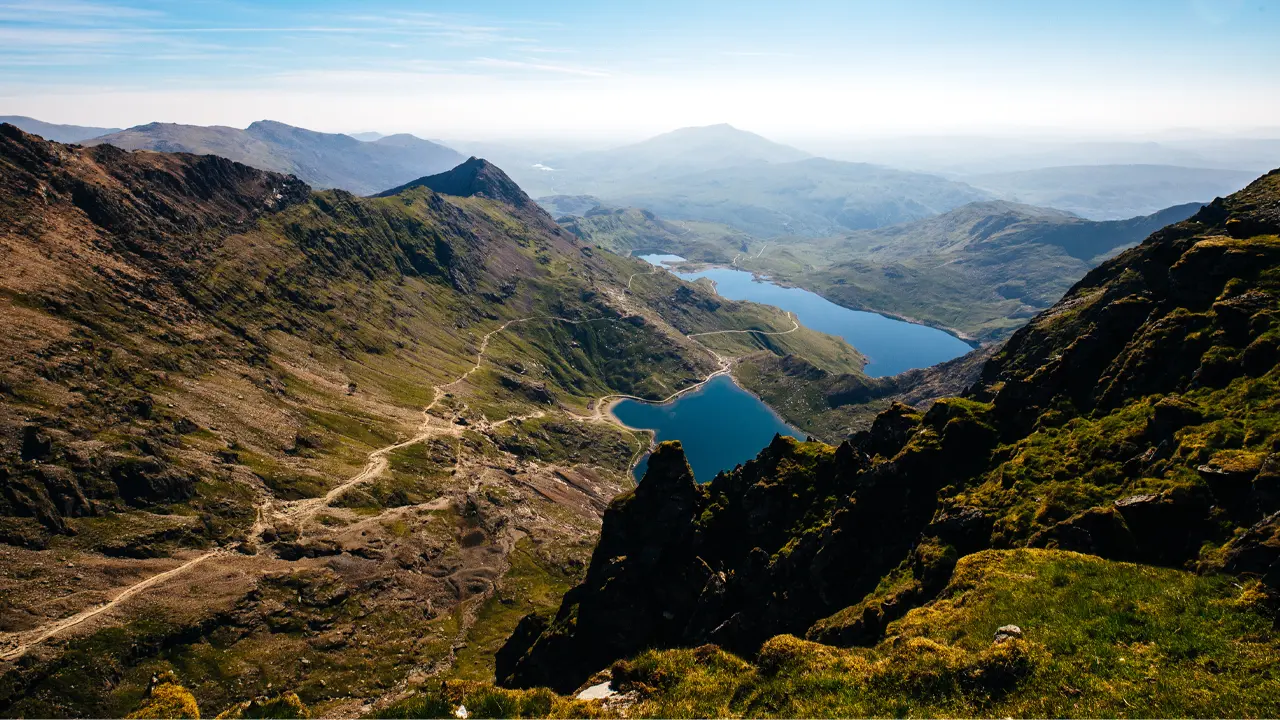
1. Eryri National Park
- Location: North Wales
- Closest station: Blaenau Ffestiniog
- Highlight: Yr Wyddfa mountain
Covering an area of approximately 825 square miles in the northwest corner of Wales lies Eryri National Park. Easily accessible by train from Bangor or Betws-y-Coed, this is the first - and arguably most impressive - of the three National Parks in Wales. It’s visited by around 10 million people every year.
Previously known as Snowdonia, Eryri reverted to its traditional Welsh name officially in 2024.
In the park are several small villages, including the picturesque Beddgelert and Betws-y-Coed. Each offers a choice of warm, welcoming hotels and guest houses that make the perfect base for exploring the wild beauty of Eryri.
The first thing to notice about this National Park is the mountains, with over half measuring more than 300 metres. Yr Wyddfa itself is an impressive 1,085 metres and is the tallest in Wales.
Water is a major feature of the park and over 700 km of rivers flow down the mountains and through the valleys. Llyn Tegid near the village of Bala is the largest natural lake in Wales.
All year round, walkers arrive to challenge themselves with the steep slopes and tough climbs of Yr Wyddfa. For those more enthusiastic about the view at the end, the Yr Wyddfa Mountain Railway takes you on a leisurely climb to the summit.
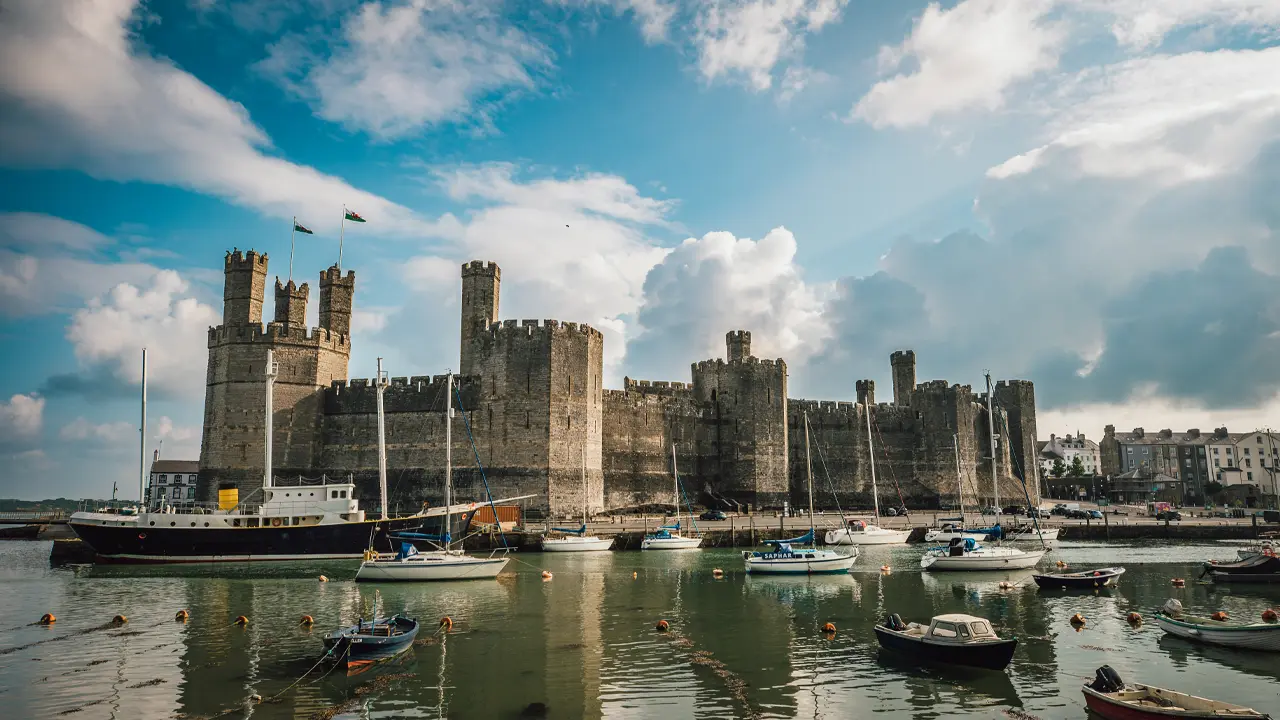
2. Caernarfon Castle
- Location: Caernarfon
- Closest station: Bangor
- Highlight: View of the castle
Easily reachable from Bangor station, Caernarfon Castle is one of the most popular tourist destinations in Wales. It's often referred to as Carnarvon Castle in English.
A UNESCO World Heritage Site, construction on the impressive motte and bailey castle began in the 11th century and continued with Edward I of England replacing the older structure with the impressive stone building in the late 1200s.
The castle was intended to be a fortress and palace for the English king, serving as such for many years. Playing a significant role in Welsh history, it was used as a prison during the Wars of Independence and the English Civil War. It was also the birthplace of Edward II of England.
Although its design was dictated by the lie of the land, its towers and turrets were a dramatic symbol of England’s rule and many of them still survive, making this a must-see on your trip to Wales.
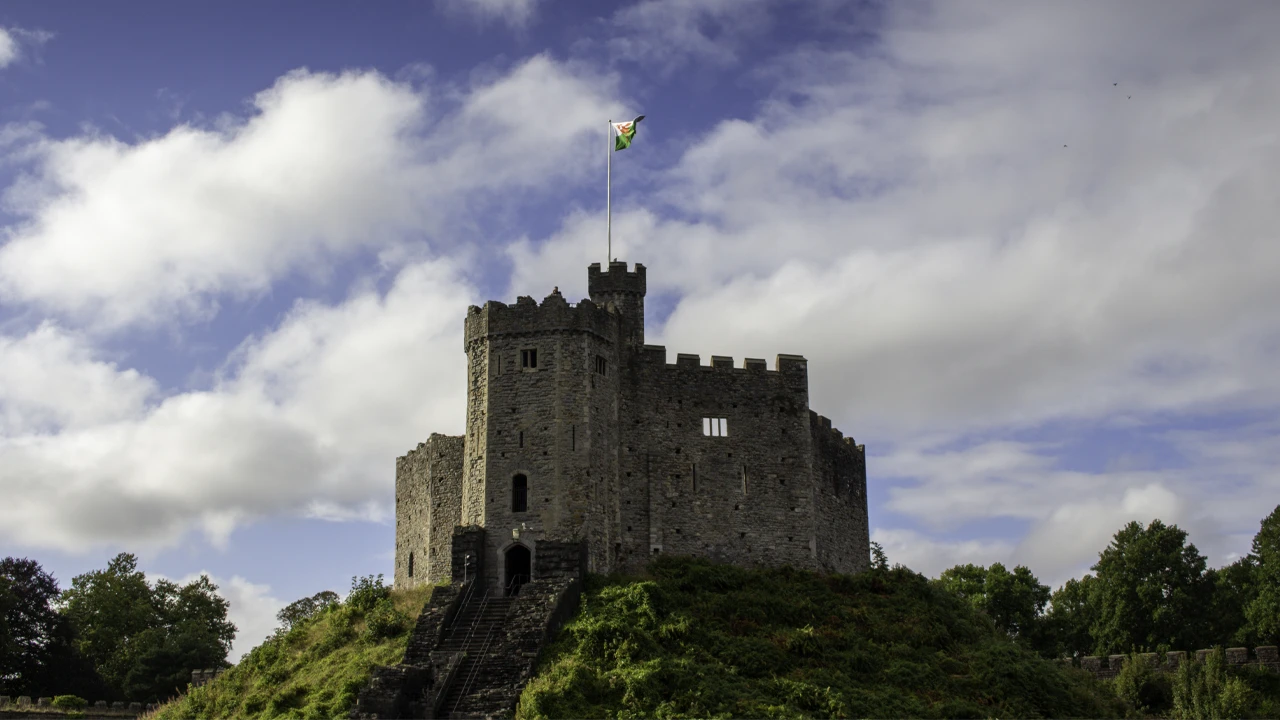
3. Cardiff
- Location: Glamorgan
- Closest station: Cardiff Central
- Highlight: National Museum of History
Cardiff, the capital of Wales and our largest city. It’s vibrant and multicultural with plenty of things to see and do. Easily accessible by train or bus, Cardiff has several of the top attractions in Wales.
Mention Cardiff to anyone and most thoughts turn to the glorious Cardiff Castle. Standing in the centre of the city, its 11th-century motte and bailey construction was added to in the mid-1800s by John, 3rd Marquess of Bute. Employing the architect William Burges, he began a transformative reconstruction of the castle in the Gothic Revivalist style.
It’s richly decorated with unique rooms like the Moorish-themed Arab Room. There’s a two-storey banqueting hall and the beautiful Roof Garden, with intricate carvings and lavish paintings, are open to the public, as are the surrounding landscaped gardens.
Cardiff Bay is one of the most widely visited places in the city. It has a cosmopolitan vibe with a choice of places to grab a bite to eat and boutique stores. It’s the perfect spot to stop and watch the world go by.
Just outside Cardiff, you’ll find St Fagans National Museum of History. Set in the tiny village of St Fagans, the open-air museum is home to a multitude of buildings and artefacts from across Wales. The buildings include farms, a medieval prince’s hall and a Victorian school. Not only is admission free, but the museum is dog-friendly, too.
With galleries, theatres and everything you’d expect in such a cultural and historic capital, Cardiff should be on your list of places to visit.
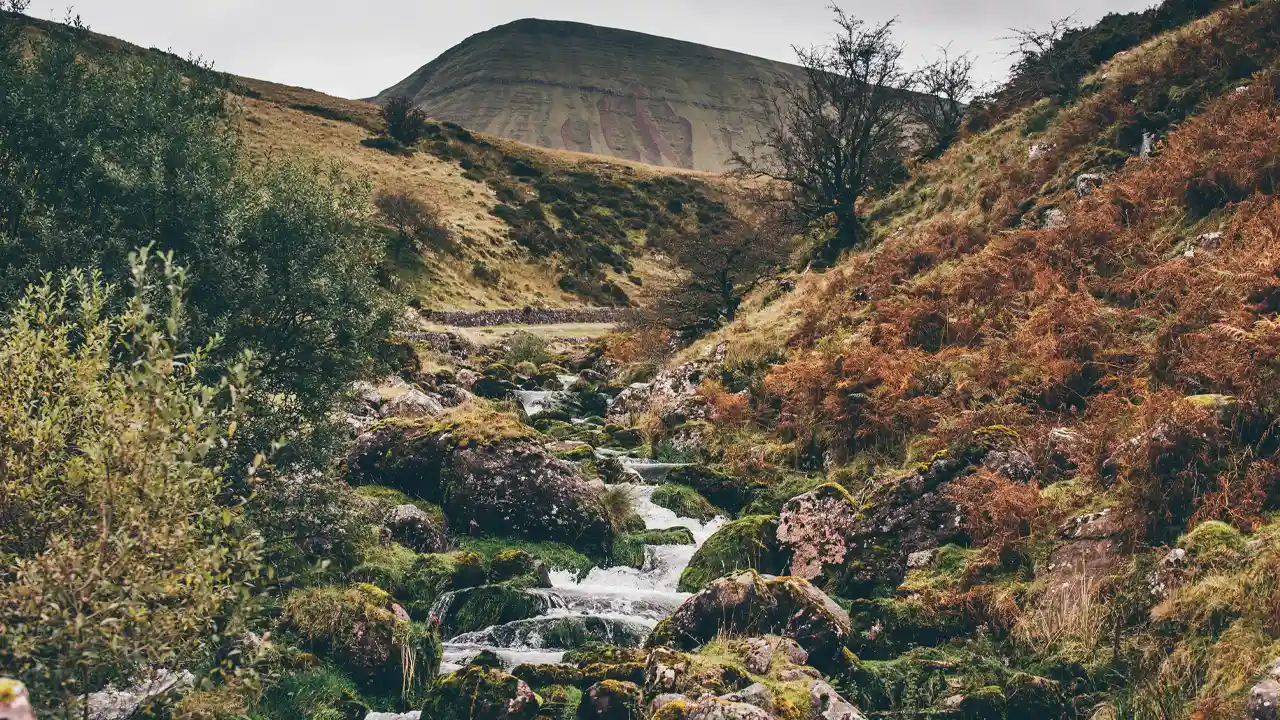
4. Bannau Brycheiniog National Park
- Location: Brecon
- Closest station: Abergavenny
- Highlight: Nighttime stargazing
Get off the train at Abergavenny railway station and you’re right on the doorstep of one of the natural treasures of Wales - Bannau Brycheiniog National Park.
With the tallest peak in South Wales - Pen y Fan - and the Black Peaks, Bannau Brycheiniog is named after the act of lighting warning beacons across the hills when invaders threatened.
With endangered plants and animals, peat bogs that are crucial in the battle against climate change and dramatic landscapes, this National Park has plenty going on every single day.
Tours of the park’s cave system, stargazing adventures and guided climbs up the tallest mountains will encourage even the novice walker to get out and explore.
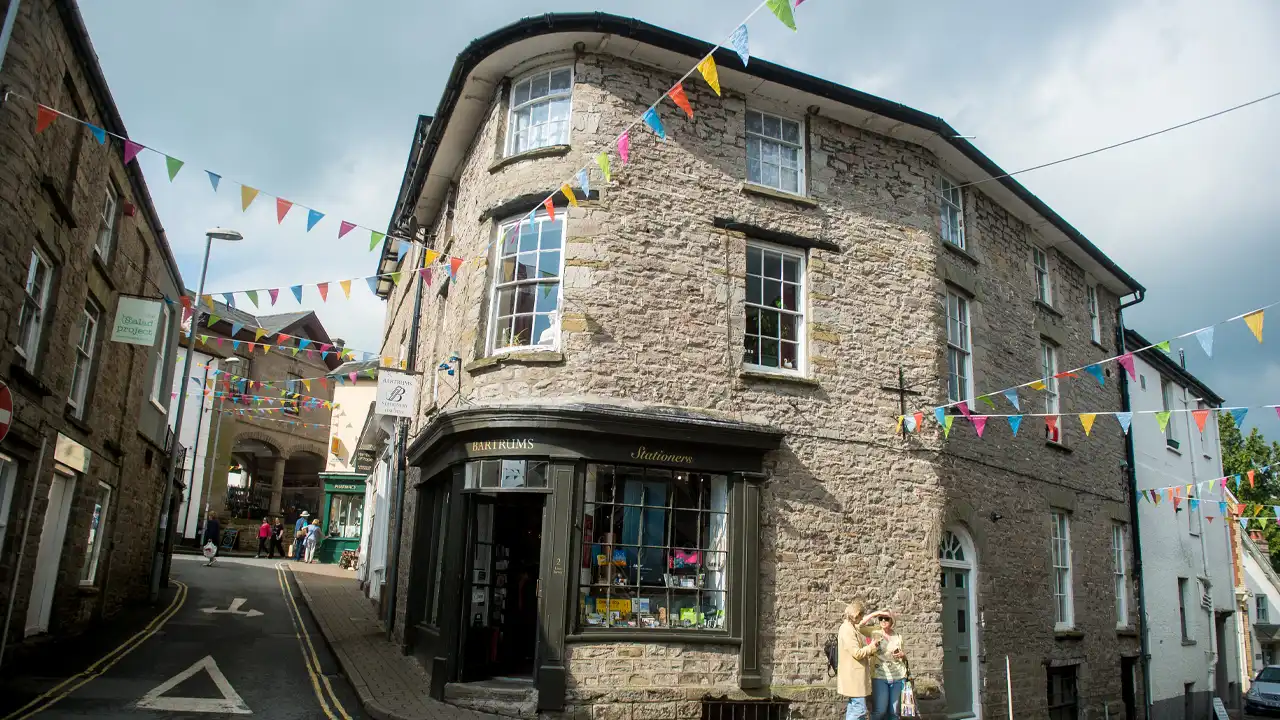
5. Hay-on-Wye
- Location: Powys
- Closest station: Hereford
- Highlight: The bookshops
On the northeastern point of the Bannau Brycheiniog, on the border between Wales and England, lies the glorious market town of Hay-on-Wye. It’s known as Hay and is a haven for book lovers everywhere as it’s home to over twenty bookshops.
Over ten days at the end of May, more than 80,000 visitors enjoy the annual Hay Festival. Hay also hosts the music and philosophy festival HowTheLightGetsIn in May and this regularly sees famous faces giving talks, including Philip Pullman, Sara Pascoe and Noam Chomsky.
With almost 150 listed buildings, luxury hotels and restaurants serving cordon bleu menus, this delightful town is well worth a visit.
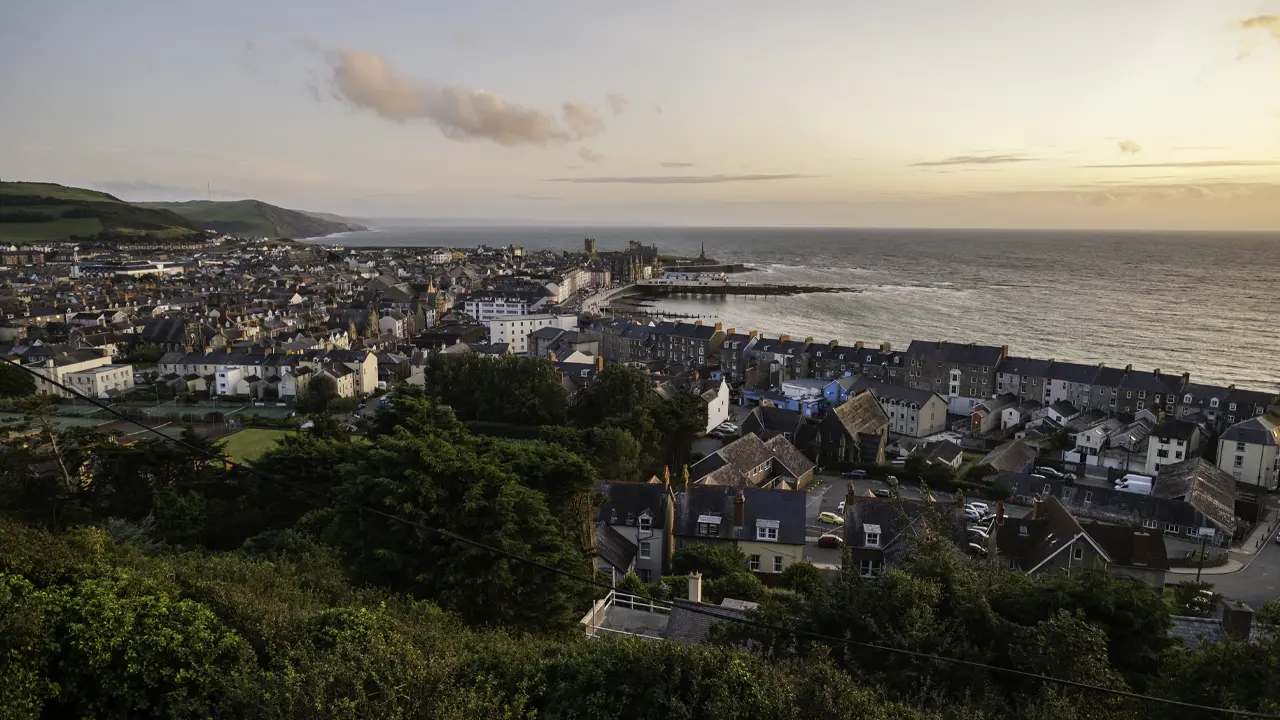
6. Aberystwyth
- Location: Ceredigion
- Closest station: Aberystwyth
- Highlight: The pier
Lying on the west coast of Wales is the popular seaside resort of Aberystwyth. The sweeping promenade draws the summer tourists and stretches from the harbour in the south to the dramatic rise of Constitution Hill.
The promenade is dominated by the impressive pier, reaching out over the waves of the bay. Its original length was 242 metres, but due to the wild storms that have battered the scenic coastline, it has been reduced.
Aberystwyth Castle, with its flint-flecked walls, was one of the greatest of the Welsh castles. Now, its ruins are scattered throughout the town thanks to Oliver Cromwell’s slighting of important buildings in the mid-1600s.
Whether a relaxing break by the sea or enjoying the attractions is your thing, Aberystwyth has it all.
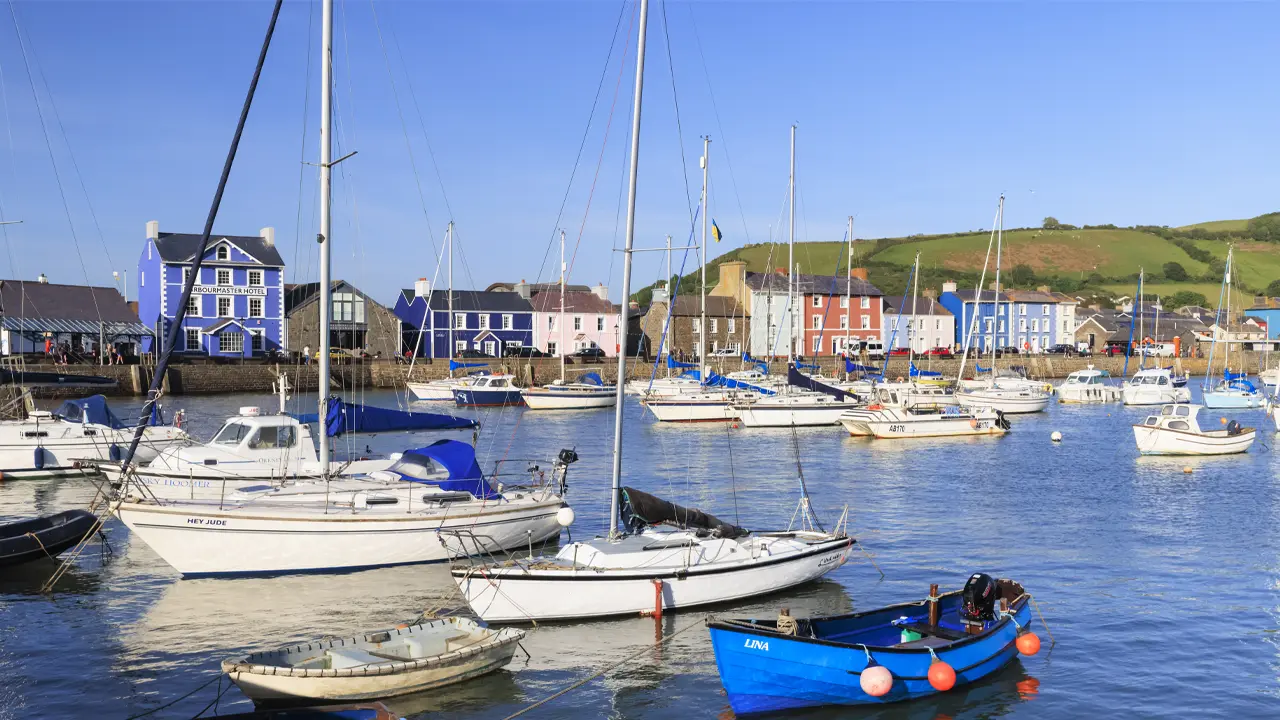
7. Aberaeron
- Location: Ceredigion
- Closest station: Aberystwyth
- Highlight: Wander around the harbour
Just along the coast from Aberystwyth lies the picturesque town of Aberaeron. Unusually, the town was the vision of one man - the Rev. Alban Thomas Jones Gwynne, who began the plans in 1805.
Starting with a harbour, houses for the workers and a school, the town took shape. Gwynne saw crafts as an integral part of life in Aberaeron. He included a bootmaker, blacksmith, baker and hat maker in his designs.
Bordering the harbour, the buildings’ Regency architecture has a classic elegance unusual in Wales. Their brightly painted facades make this pretty town a lovely place to visit.
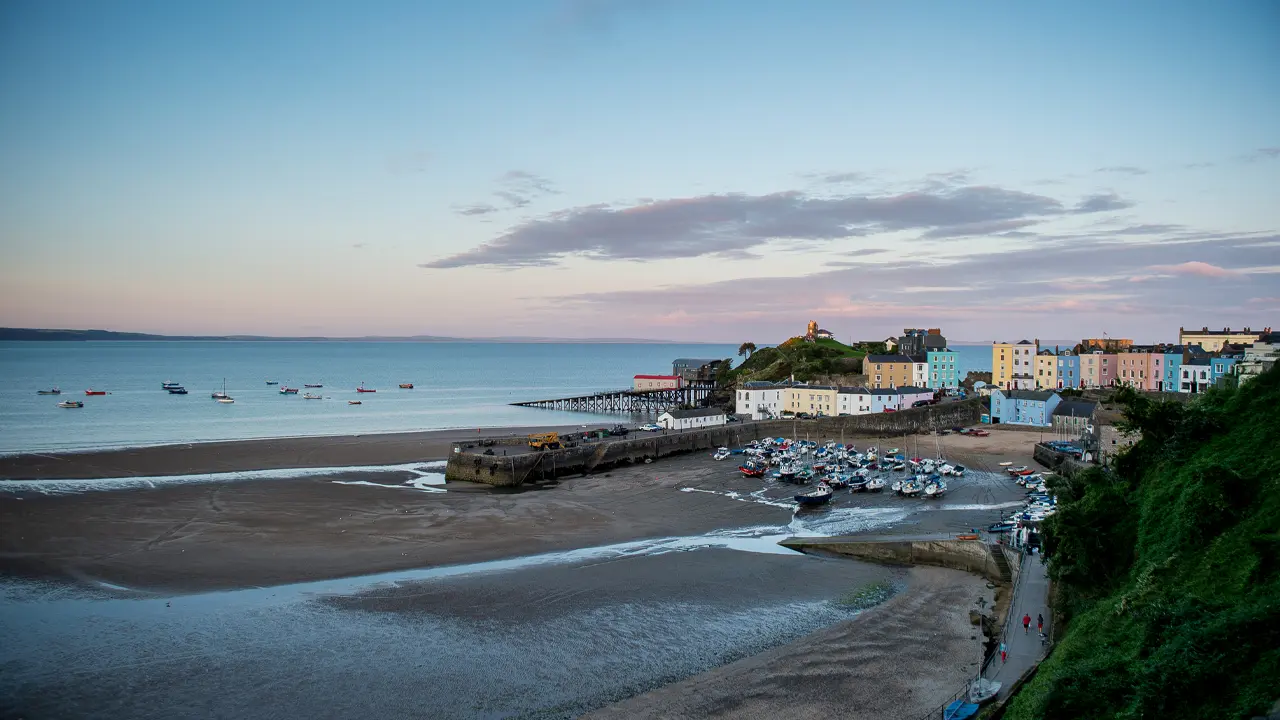
8. Tenby
- Location: Pembrokeshire
- Closest station: Tenby
- Highlight: Enjoy a spot of fishing
Tenby has been one of the most popular seaside towns in Wales since the early 1800s. It boasts a beautiful harbour where you can head out to sea on a mackerel fishing trip.
There’s also the option of visiting Caldey Island. It’s a calming spot that’s owned and run by a community of Cistercian monks, which is 20 minutes by boat.
With two sweeping golden beaches (including Castle Beach - the Sunday Times' best beach in the UK), pretty pastel-coloured houses and many independent boutiques, it’s no surprise that visitors still flock to Tenby.
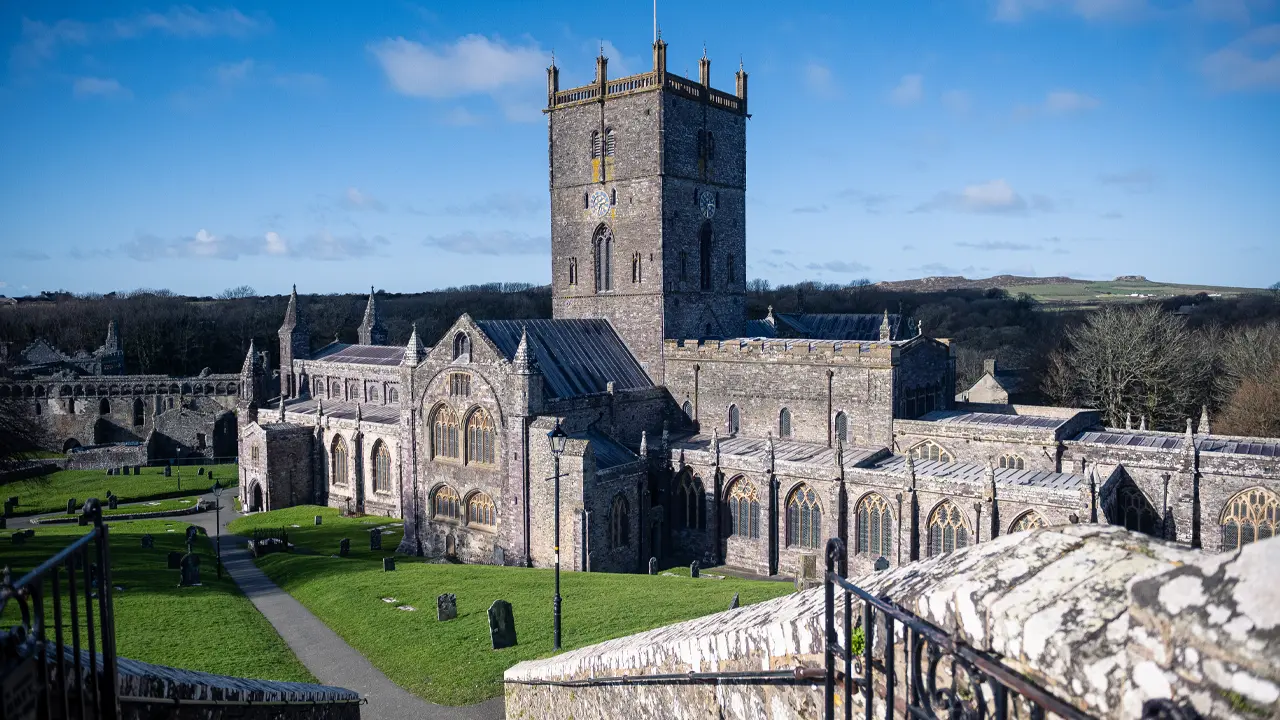
9. St. David’s Cathedral
- Location: Pembrokeshire
- Closest station: Tenby
- Highlight: The historic cathedral
St David’s, on Wales’ Pembrokeshire coast, is the UK’s smallest city and the resting place of the patron saint of Wales. Given city status in the 1100s, the vast, impressively preserved cathedral overshadows the small settlement.
Founded in 589, the monastic community grew and continued to survive despite many attacks over the years. In 1115, Bishop Bernard began work on a new cathedral. After Pope Calixtus II bestowed a papal privilege on the site, it became the centre of pilgrimage for the western world, needing a larger, more impressive cathedral.
The Pembrokeshire Coast is the third largest National Park in Wales. This stunning seaside landscape incorporates rugged cliffs, secluded beaches and inland waterfalls leading to wooded rivers. With rare flora and fauna, this ecological wonderland should be top of everyone’s to-do list.
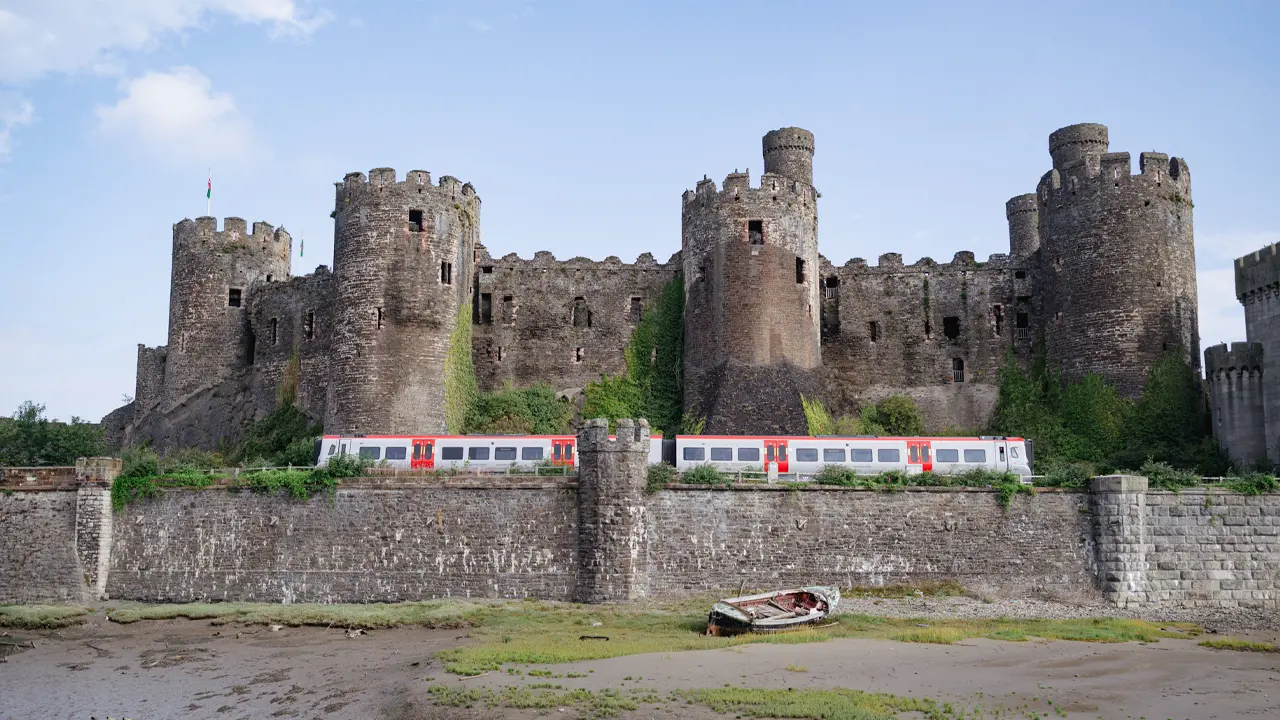
10. Conwy
- Location: North Wales
- Closest station: Conwy
- Highlight: The impressive castle
The North Wales town of Conwy is popular with tourists who flock to the town to see the glorious Conwy Castle. A UNESCO World Heritage Site, the organisation considers it one of Europe’s best surviving examples of 13/14th-century architecture.
Towering over Conwy, the defensive castle walls surround the town. Using the spiral steps in the towers, visitors are able to walk an entire circuit of the walls - nearly 1.5 km.
The great Mount Yr Wyddfa can be seen in the distance, with the medieval streets of Conwy and harbour lying far below.
Spanning the river near the castle is Thomas Telford’s suspension bridge. Finished in 1826, its construction echoes the design of the castle turrets, making an impressive sight. Now owned by the National Trust, only pedestrians are allowed to cross the bridge.
-
Visit Cardiff Explore Visit Cardiff
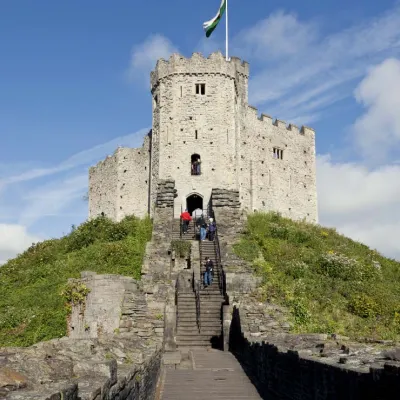
-
Visit Chester Explore Visit Chester
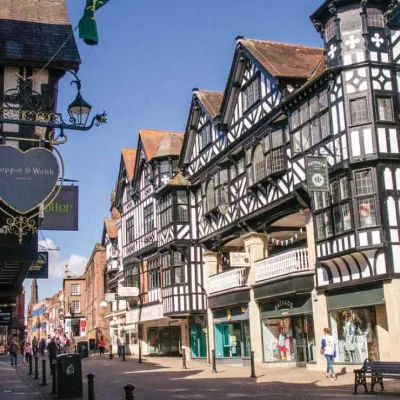
-
Visiting Manchester Explore Visiting Manchester

-



